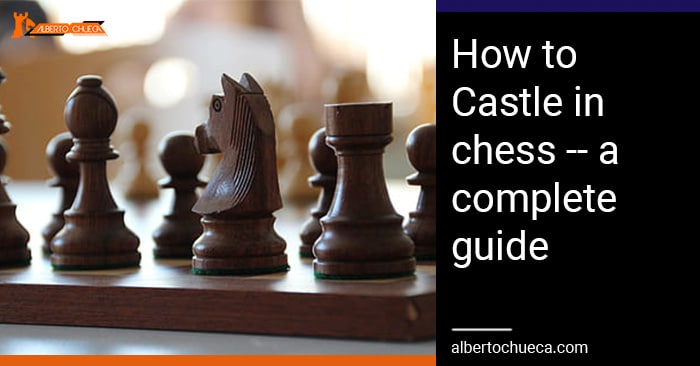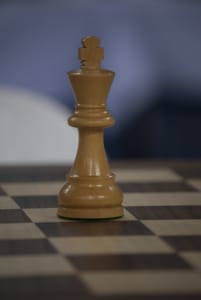Table of Contents
How does one Castle in chess?
We've learned about how the pieces move, their values, special rules, etc. One of the special rules is castling. How to castle in chess is one of those chess moves that many beginners have serious trouble understanding. It's the only move in chess where you can move two pieces in one turn, and it just seems very illegal! Today's lecture will be focused on how does one castle, why do we castle, and making sure you understand the concept by the time you are done reading this article!
Review: How do the King and Rook move
Before we delve into castling, let's have a quick review as to how do the pieces involved (King and Rook) move. The King is set up in the center of the board on the back row, it must start on its opposite color on the chessboard. The Rooks simply start in the corner.
We simply remember that the King can move one space in any direction possible.
The Rook moves in a straight line in any direction
We know the King can move one square in any direction while the Rook goes in a straight line in any direction. However, as we will see, casting contradicts some of the rules of chess!
How to actually castle in chess
Here is how you castle in chess. You must have space in between the King and either Rook.
If you see the diagram above, it's indeed correct that you move the King more than one square in one turn. You have to move the King two squares towards the Rook then flip the Rook to the other side of the King right next to it. Talk about contradicting the rules of chess!
In the example above, the King starts on e1. When you move it 2 squares to the right, it lands on g1, and the Rook flips over to f1, right next to the King on the other side. Same applies for Queenside (left), move the King 2 squares (no more, no less) towards the Rook to c1, flip the Rook over to d1.
When can't you castle in chess?
Unfortunately, you cannot just castle any position where the King and Rook can meet. There are a few guidelines you must know:
- Castling must have been the first move of the King and Rook that are doing so. This means if you had previously moved, for example, your King, and you try to castle, you are not able to.
- You (obviously) cannot castle into check. Any move that puts you in check is illegal!
- You cannot castle while you are in check unfortunately
- You cannot castle THROUGH check. This trips up a lot of people, but you cannot move your King across
The following are examples as to when you can't castle.
In the situation above, moving the King to c1 would put him in check. Obviously a no-go. But what if we tweak the Bishop's position slightly?
The King landing on c1 would seemingly be safe as the Bishop covers the d1-square, however, in the position below, White still is unable to castle because doing so would put him THROUGH check!
Strategic Implications of Castling in chess
So you might be thinking, “the whole casting concept sounds great and all, but why would I need to castle in a game of chess?”. That is a great question that must be answered… every special chess rule exists for a reason!
The reason it is commonplace to castle in chess is that as beginners, we are taught to play in the center, right? And relative to the other pieces, our King starts in the center. So when all of the action is going on in the middle of the board, it makes sense to tuck your King to the side right?
Model Game: How refusing to castle can get you punished
One good example game occurs with the famous English Grandmaster John Nunn on the receiving end of an attack because he had failed to castle. French Grandmaster Igor Nataf played with the Black pieces.
In the diagram above, it is quite a strange position. But, the main concept to notice is that White is castled, and black is not! To make things better for Black, he has strong attacking pieces with the half-open f-file, Knight, and a couple of Bishops poised to attack. All things considered, Black played the spectacular Nxf2!
Many brilliant attacks are not made possible unless the opposing side refuses to castle! The main point is if Bxf2, Black doesn't give in, Rxf2, Kxf2, Bh4+, one variation might include Ke3, Qg5+, Kd3, Nb4+.
White's King is simply on the run with Black's forces bombarding at them. Just learn how to castle in chess, and you will be safe!









